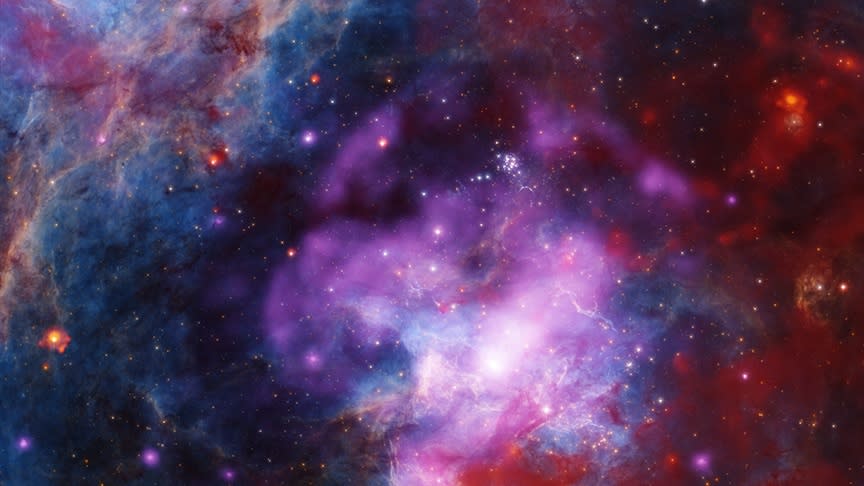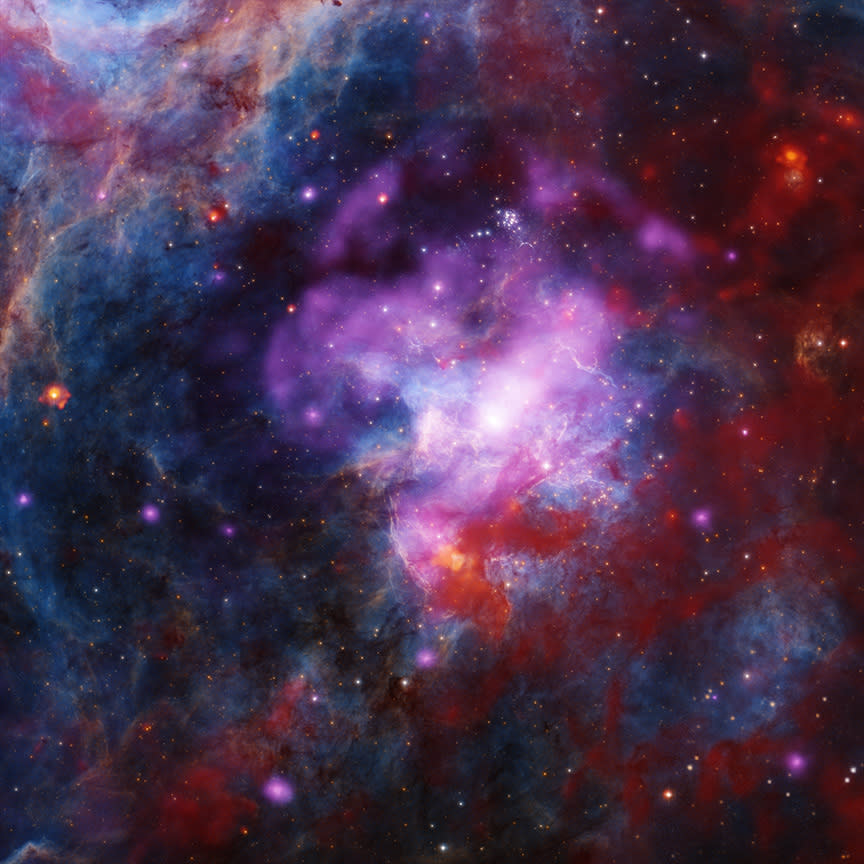Aftermath of 2 star explosions captured in breathtaking new NASA image

NASA has started the new year with a self-proclaimed "double bang" — that is, an image of supernova remnant 30 Doradus B, or 30 Dor B. Why is it a double? Well, in creating this image, a team of astronomers studying the remnant discovered that it could not have been formed by a single supernova. Instead, the researchers believe it was created by at least two.
30 Dor B is a region in the Large Magellanic Cloud, a small satellite galaxy of the Milky Way that sits some 160,000 light-years away from us. It comprises "dark clouds of gas, young stars, high-energy shocks, and superheated gas," per NASA. A team led by Wei-An Chen from the National Taiwan University in Taipei, Taiwan, used more than two million seconds of observing time from NASA's Chandra X-Ray Observatory to study 30 Dor B.
But to get the high level of detail that you see in the image of 30 Dor B, the team combined that data from Chandra with additional data from Chile's Blanco 4-meter telescope, NASA's Spitzer Space Telescope and NASA's Hubble Space Telescope. This combined light in the infrared, X-ray and visible spectrums, giving scientists a very good look at all the action inside 30 Dor B.
Related: 'Weird' game of cosmic tug-of-war in the Tarantula Nebula weaves up new stars
Related Stories:
— Carina Nebula twinkles in gorgeous new Hubble photo
— James Webb Space Telescope reveals the colorful Ring Nebula in exquisite detail (photos, video)
— Astronomers catch rare glimpse of oldest known supernova, which dates back to Year 185

Studying that data, researchers noticed two distinct features in their maps, thought to be from different supernovas: an X-ray shell 130 light-years across and a pulsar wind nebula. The first supernova is thought to have happened more than 5,000 years ago, creating the X-ray shell. Then, around 5,000 years ago, a second supernova likely created the pulsar wind nebula. And, the team says, it's even possible that additional supernovas occurred even further back in time to impact 30 Dor B.
From a science perspective, this image can help researchers glean information about the life and death of massive stars and their resulting supernovas. And for the casual viewer, you can simply delight in the watercolor-like appearance of 30 Dor B.

